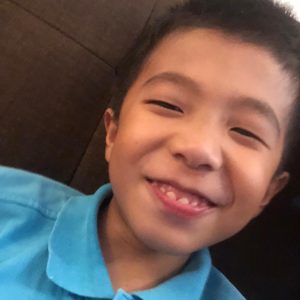Services
- Autism
- Attention Deficit
Hyperactivity
Disorder (ADHD)/
Dyslexia - Learning Disorders
- Specific Language
Impairment (SLI) - Hearing Loss/
Hearing Impairment - Group Sessions for Social Interaction and Classroom Interactions
- Home Visits
- School Visits
- Parent Training/
Shadow Support
Training/
Teacher Training/
Lecturing
Hearing impacts language learning and learning in general to varying degrees. Depending on the type of hearing loss and the degree of hearing loss, the impact may be greater or smaller.
Other factors that might add additional challenges include, cognitive abilities, learning abilities and neurological or psychological issues.
SESSIONS FOR CHILDREN WITH HEARING ISSUES
Children with hearing issues are likely to develop spoken language. They are probably able to go to mainstream schools. To achieve these, the sessions are focused on developing their listening skills. They will be taught how to listen to language, process and understand language and speak it.
Lip reading gives limited clues as to what is being spoken. The best way to learn to speak is through listening. The sessions will be about listening and not so much about looking. Hearing devices such as hearing aids and cochlear implants are necessary to give the child the ability to hear words clearly. When they can hear very well, they are able to reproduce the words well through training.
Listening is only the first part of the journey towards developing nice spoken language. The child’s language development will be pegged to the language development of typical children. Each area of language will be measured to make sure that the child is learning language like a child who does not have a hearing issue.
TYPES OF HEARING LOSS
Sensorineural Hearing Loss
Sensorineural hearing loss is permanent and has different types and different levels.
Hearing aids and/or cochlear implants with the use of FM devices will give the child important access to speech sounds and this will give him/her to learn language.
The age at which the child starts using these devices diligently throughout all waking hours, every single day, will affect the level of success in developing spoken language.
Intervention and therapy is critical in the equation for success.
Profound, Severe, Moderate and Mild Hearing Loss
PROFOUND HEARING LOSS
Profound hearing loss means that the child is unable to hear most speech sounds clearly. Words that cannot be heard is virtually impossible for the child to reproduce. Cochlear implants might be a way to overcome this type of hearing loss. With cochlear implants, access to all speech sounds might be possible. If worn consistently coupled with regular therapy, clear spoken language may be developed.
SEVERE HEARING LOSS
Severe hearing loss means that the child might be able to hear some speech sounds but many speech sounds will be beyond their hearing level. Cochlear implants and/or powerful hearing aids may be the solution in developing clear spoken language.
MODERATE HEARING LOSS
Moderate hearing loss means that the child might be able to hear more speech sounds than children with severe hearing loss but it might not be enough to develop clear spoken language if hearing aids are not used consistently.
MILD HEARING LOSS
Mild hearing loss means that the child might be able to hear most speech sounds but with varying degree of clarity. Some children may have difficulty hearing tenses and plurals and thus will have difficulty learning and reproducing these.
Sometimes there is a misconception that children with mild hearing loss do not need hearing aids. This is because these children do usually develop spoken language as they are able to access most speech sounds.
However, as these children grow, aspects of language such as tenses (such as “cook” and “cooked”) and plurals (such as “cat” and “cats” may be affected. This is because the “ed” in “cooked” and the “s” in “cats” cannot be heard by some children who are not wearing hearing aids. These can then be seen in their verbal expressions and in their writing. They may not say plurals and they might not write plurals in their writing.
More importantly, if these sounds have not been heard by them for years, they might have not have the ability to produce these sounds when they are older. For example, the sounds, /s/ which is a high frequency sound which some children with mild hearing loss might have difficulty hearing, might be challenging to produce when the child becomes an adult.
Conductive Hearing Loss
Conductive hearing loss is a temporary form of hearing loss.
This usually occurs when the child is suffering from middle ear infection brought about by colds or allergies. Other causes include a punctured ear drum, earwax or a foreign object stuck in the ear canal.
Treatment include prescription of antibiotics to cure the infection. The use of tubes (grommets) helps in cases of persistent presence of fluid in the middle ear.
While the child is experiencing a conductive hearing loss, he/she may not be able to hear speech sounds clearly until he/she recovers. This may take months and in some cases years if the infection is constantly recurring. During this period the learning of language is very likely to be affected or delayed.
Other Hearing Issues
There are other hearing issues such as Auditory Neuropathy. This is rare and not as common as sensorineural or conductive hearing loss.
Auditory Neuropathy means that the child may be able to hear but the sounds received may not be accurately transmitted to the brain. This will impact language learning and therefore learning in general. The use of hearing aids and cochlear implants coupled with therapy usually helps.
CHILDREN WITH HEARING LOSS CAN DO WELL IN SCHOOL AND IN LIFE
Hearing issues can usually be addressed with the help of hearing devices. If the child does not have any other developmental issues, hearing issues should not prohibit the child from developing good spoken language, doing reasonably well in mainstream schools and going on to become a fully functioning, working adult.





